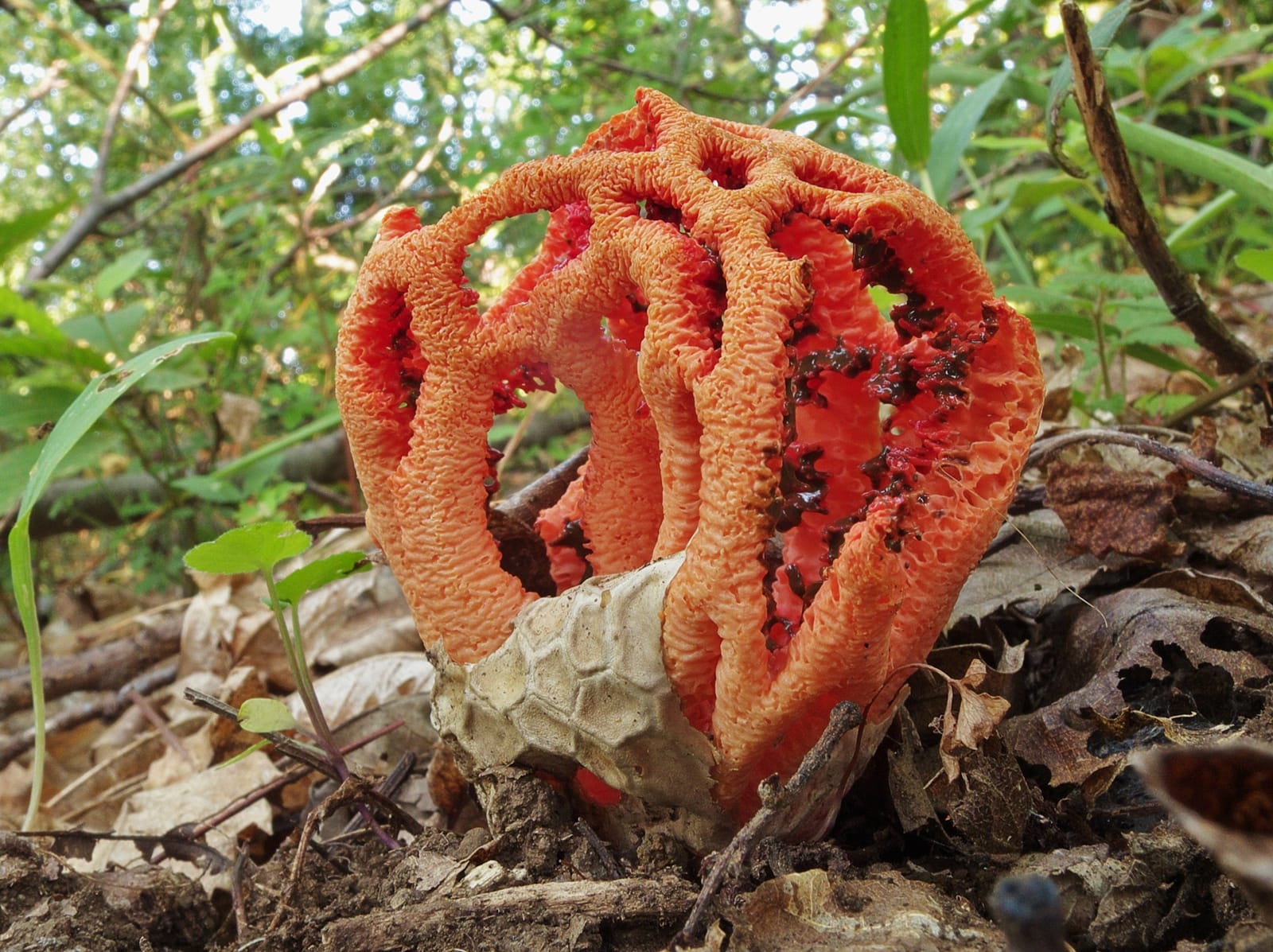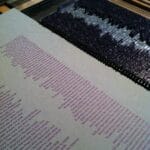Clathrus ruber, the latticed stinkhorn, is a captivating yet pungent fungus, attracting attention with its intricate cage-like structure and repulsive rotting meat odor. Emerging from a gelatinous egg-like volva, this saprobic fungus plays a crucial role in decomposing woody plant material and contributes to ecosystem health. While visually striking in hues of red, orange, or pink, its potent smell, driven by the gleba, facilitates spore dispersal by attracting flies. Though not officially documented as edible, its fetid odor renders Clathrus ruber unappetizing, and its edibility remains largely unexplored.
Decoding the Lattice Stinkhorn: Appearance, Ecology, and Lore
The Clathrus ruber, more commonly known as Devil’s Fingers or the Red Cage fungus, is a fascinating member of the fungal kingdom, belonging to the family Phallaceae and genus Clathrus. It is, in fact, the type species of the genus Clathrus. Throughout history, it has also been known by various synonyms including Clathrus cancellatus, Clathrus flavescens, Clathrus nicaeensis, and Clathrus ruber var. flavescens. It’s a fungus that demands attention, not for its beauty, but for its bizarre appearance and pungent aroma. This article delves into the intriguing biology, ecology, and cultural impact of this unusual organism.
The Transformation and Structure of Clathrus ruber
Clathrus ruber undergoes a dramatic metamorphosis. Initially, it exists as an unassuming, white to grayish, egg-shaped structure called a volva, reaching up to 6 cm in diameter. This volva contains a gelatinous interior, up to 3 mm thick, which encases the developing fruiting body. As the fungus matures, the volva ruptures, unveiling the remarkable lattice-like structure within. This intricate cage, formed by interconnected, hollow, spongy arms, expands rapidly, creating a hollow sphere or oval. The color of the mature fruiting body is often a vibrant red, due to pigments like lycopene (the same pigment that gives tomatoes their red hue) and beta-carotene. However, variations in color, ranging from pink to orange, are not uncommon, likely influenced by environmental conditions and genetic variations in pigment production. The remnants of the volva persist at the base of the mature fruiting body, a reminder of its humble beginnings.
The Pungent Perfume: Smell and Spore Dispersal
Perhaps the most striking characteristic of Clathrus ruber is its powerful, putrid odor, often likened to rotting meat or decaying flesh. This unpleasant aroma originates from the gleba, a sticky, olive-brown to blackish slime that coats the inner surfaces of the lattice structure. The gleba is rich in spores, the reproductive units of the fungus. The stench, while repulsive to humans, serves a crucial ecological function: attracting insects. Flies, drawn by the smell of decay, land on the gleba, becoming inadvertently coated in spores. These unsuspecting insects then act as vectors, dispersing the Clathrus ruber spores to new locations as they move about. This ingenious, albeit smelly, strategy ensures the fungus’s continued propagation.
Ecological Role and Habitat: Nature’s Recycler
Clathrus ruber, like other stinkhorns, is a saprobic fungus, meaning it obtains nutrients by decomposing dead organic matter. It plays a vital role in ecosystem health by breaking down woody plant material, such as fallen branches and decaying logs, returning essential nutrients to the soil. This process of decomposition is fundamental to nutrient cycling in forest ecosystems. Clathrus ruber thrives in moist, humus-rich environments, often found in gardens, mulch beds, and forested areas. Its distribution is primarily in warmer climates. While native to Europe, likely originating in the Mediterranean region, it has been introduced to other parts of the world, including North America, Asia, and Australia, probably through the transport of soil and plant material.
Is Clathrus ruber Poisonous? Navigating the Uncertainties
The question of Clathrus ruber’s edibility is complex. While not officially classified as poisonous, its potent odor makes consumption highly unappealing. Limited anecdotal evidence suggests that the immature egg stage may be consumed, but this is not widely practiced and is not recommended. The mature, latticed form is generally considered inedible. The lack of scientific research on its chemical composition and potential toxicity makes it impossible to definitively declare it safe for human consumption. Furthermore, the risk of misidentification with toxic look-alikes adds another layer of concern. In the realm of wild mushrooms, caution is always advised. If you are unsure about the identification of any wild fungus, consult an expert mycologist before considering consumption.
The Rarity of Clathrus ruber: A Patchwork Distribution
The rarity of Clathrus ruber depends heavily on geographic location and local environmental conditions. While common in some regions, it can be quite rare in others. Its native range is believed to be southern and central Europe, with introductions to other continents over time. In mainland Britain, for instance, it is considered relatively rare, primarily found in southern England and the Channel Islands. Conversely, in areas like the Algarve region of Portugal, it is significantly more abundant, often appearing in gardens, along roadsides, and in Cork Oak forests. Factors influencing its distribution and abundance include habitat availability (moist, humus-rich environments with decaying woody material), climate conditions (warm and humid), ecological competition with other fungi, and human activities such as deforestation and habitat destruction. Ongoing research, including citizen science projects like iNaturalist, continues to refine our understanding of its distribution and the factors that influence its occurrence.
Stinkhorn Ecology: Good or Bad? A Nuanced Perspective
Stinkhorn fungi, including Clathrus ruber, often elicit strong reactions due to their unusual appearance and pungent smell. However, their ecological role is undeniably beneficial. As decomposers, they play a crucial role in nutrient cycling, breaking down dead organic matter and enriching the soil. This decomposition process supports plant growth and contributes to overall ecosystem health. Their unique method of spore dispersal, attracting insects with their foul odor, is a testament to the ingenuity of natural selection. While generally considered non-toxic to humans, their smell effectively deters consumption. However, pets, particularly dogs, may be attracted to the odor and ingest the fungus, potentially leading to gastrointestinal upset. Therefore, keeping pets away from stinkhorns is recommended. Further research into their chemical composition may reveal untapped potential, such as medicinal properties, but for now, their primary value lies in their contribution to ecological processes.
Unique Insights and Untapped Potential of Clathrus ruber Research
While much is known about Clathrus ruber, numerous avenues for future research remain. A deeper understanding of the specific compounds responsible for the unique odor and the evolutionary advantages of this olfactory strategy compared to other fungal dispersal methods could provide valuable insights into fungal ecology. Investigating the potential medicinal properties, particularly of the egg stage, warrants further exploration, as does documenting the precise geographic distribution and correlating it with environmental factors. Examining the cultural significance and folklore surrounding this striking fungus could add a fascinating human dimension to its natural history.
Visit our beautiful cosmic ashtray in Utah to experience the beauty and tranquility of the natural landscape.
















